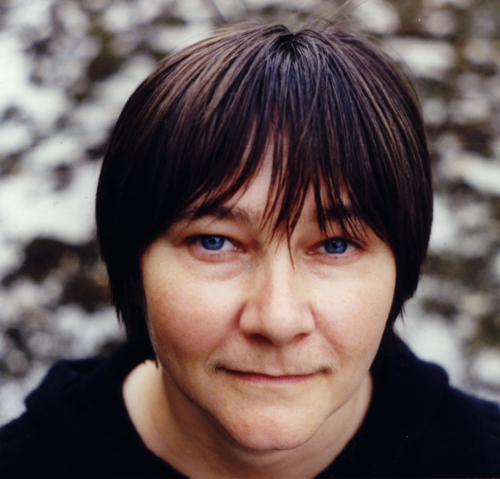
An Interview with Ali Smith
Since her first story collection Free Love and Other Stories, Ali Smith has consistently earned critical acclaim for her layered, beguiling wordplay and texts that experiment with the boundaries of form and genre. Her latest novel, the Booker Prize-nominated How to Be Both, comes out in the U.S. today.
How to be Both functions as a diptych: depending on your edition of the text, the reader may first encounter Francesco del Cossa, a gender-nonconforming Renaissance artist in Ferrara, Italy, or George, a teenage girl in the contemporary U.K. who has recently lost her mother. In The Guardian, Smith stated that she hopes the book “gestures to all the ways to read that are possible.”
Cossa’s story moves from poetry, prose, and across the adventurous landscape between the two; George’s narrative is more conventional, though no less dazzling. The two narratives intertwine and complement each other; images accumulate meaning and then skillfully contort. Duality is at the core of the stories—dead and living, man and woman, past and present.
I conducted this interview via email over several months. Smith’s interest in simultaneity was immediately reflected in our correspondence, enthusiastically veering into parentheticals and conversational fragments separated by asterisks. I read the title of the novel, fittingly, as both a statement and a question. And if there is an question posed, perhaps the answer is: joyfully.
—Amy Feltman
I. UNDERSHADOWS OR UNDERSTORIES
THE BELIEVER: I read in your 2012 interview with The Quietus that you said, “Form will tell you everything about where [people] live and what shape they’re in.” Can you speak to how form functions in How to be Both?
ALI SMITH: I came at this novel with form foremost in mind. I wanted to write something that would gesture to fresco structure. I’d been reading about Renaissance frescos and fresco technique after having traveled down in the bowels of San Clemente in Rome, a place where several different layers of the building (which has, upstairs in its surface-level church, a glorious set of frescoes depicting the martyrdom of St. Catherine opposite the Popeship of St. Ambrose—a gender lesson in itself) sift, as it were, downward, literally through time and belief systems, and end, several levels below, in a bit of ancient Roman street and an underground spring.
I’d gotten excited about a particular physical conceit: how fresco restoration—which begins with the painstaking removal of the layer of the wall into the original wet plaster of which the fresco had been painted all the centuries ago—invariably reveals the underdrawing, or sinopia, under the surface: the first work of the artist, which has been under there all this time invisible....
You have reached your article limit
Sign up for a digital subscription and continue reading all new issues, plus our entire archives, for just $1.50/month.
Already a subscriber? Sign in




